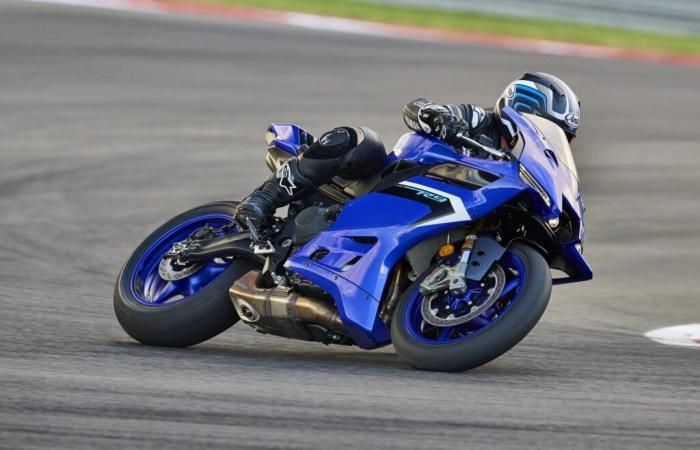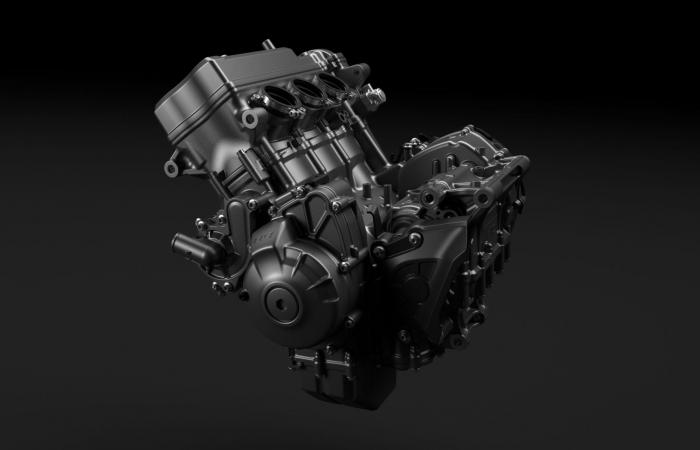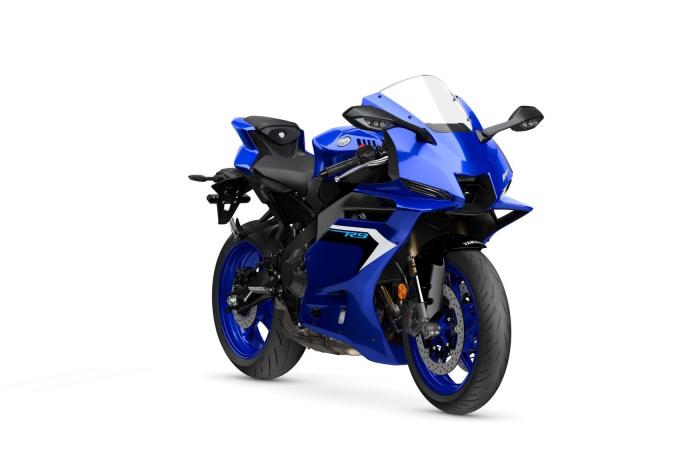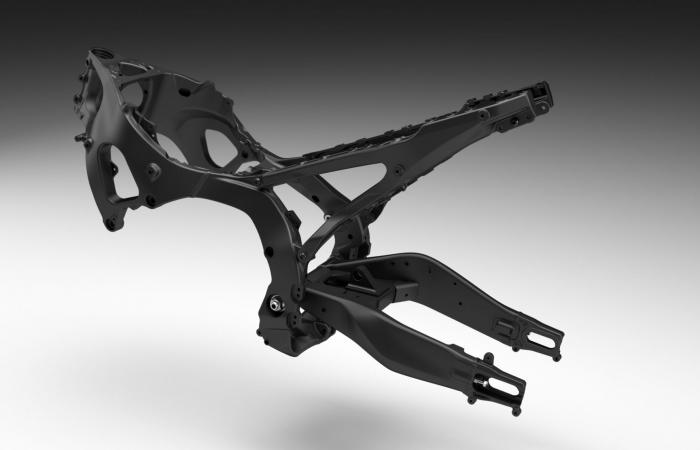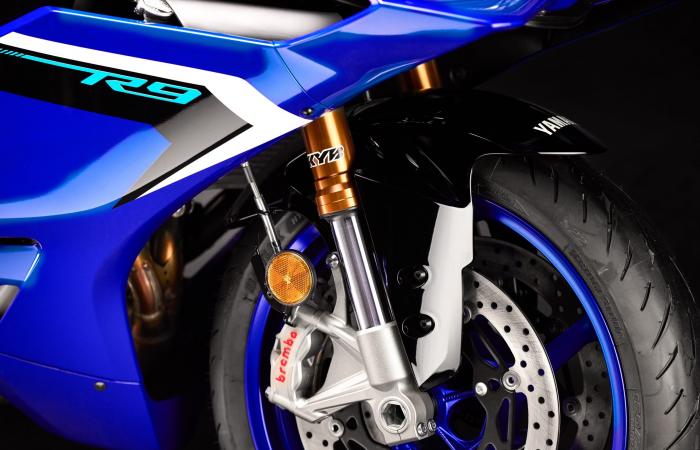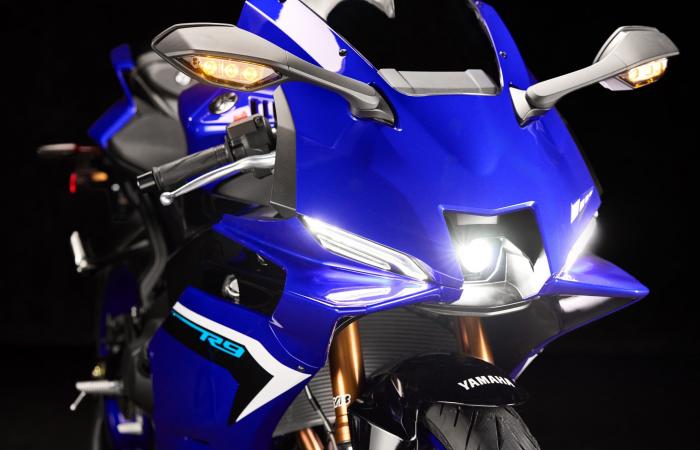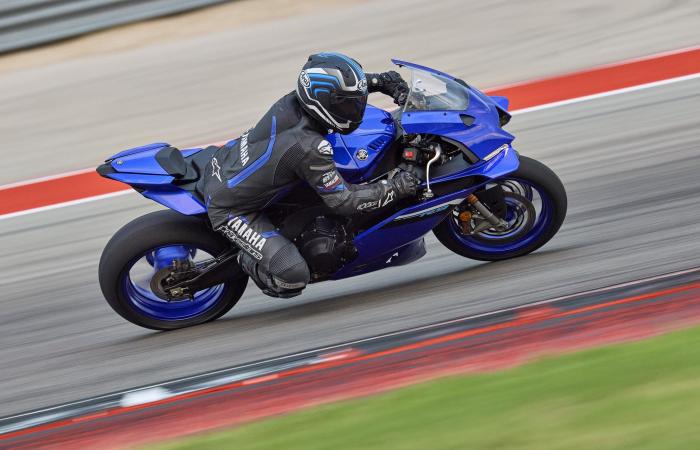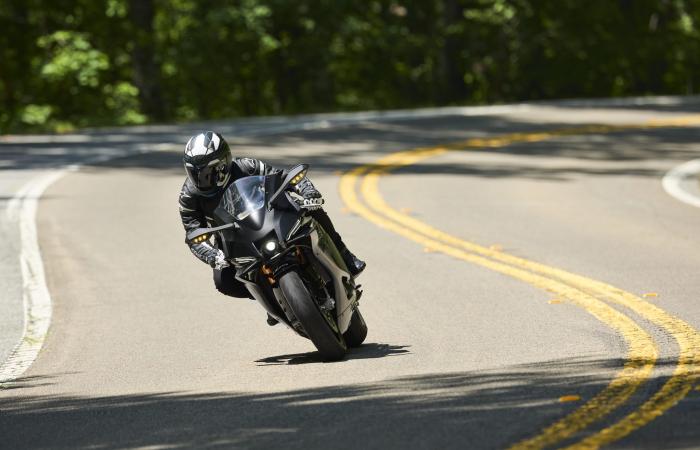While the R1 (1000 cm3), Yamaha’s sports flagship with a 4-cylinder engine, will no longer be developed or approved for the road, the R6 (600 cm3) has already been experiencing the same fate for several years. These two iconic motorcycles from the Japanese brand, which are now only available for the circuit, will therefore be replaced by the R9.
The new R9 takes the place of the R1 for the road. Of course, the old R1 versions will rule the roost with amateur athletes for a long time to come!
The R6 will end its career in World Supersport at the end of this season, while remaining in the Yamaha range. The R9 will compete in the World Supersport Championship (the regulations allow) next year. Other Cups and championships will certainly also field R9s!
A sports car powered by the CP3 of the MT-09
The engine of this new machine is Yamaha’s well-known CP3, an in-line three-cylinder which is a safe bet and provides maximum fun, particularly on the hyper naked MT-09 (read our test of the 2024 version).
On the all-new R9, it remains unchanged and still delivers a power of 119 horsepower at 10,000 rpm, while offering a maximum torque of 93 Nm at 7,000 rpm.
The CP3 is also used in the sport-GT Tracer 9 and the neo-retro XSR 900. It is lively at revs and revs, while being very civilized at low revs. Note the two very short exhaust outlets under the engine, a sign of good mass centralization. Like on the MT-09.
MotoGP-style fins
In terms of looks, the R9 2025 sees its front resolutely worked on the aerodynamic side with a somewhat rounded enveloping screen and a central front deflector which is fixed in front of the headlight, to work in synergy with the MotoGP-style fins, all contributing to the aggressive aesthetic.

According to Yamaha, these fins reduce front wheel lift by 6-7% in a straight line, and when combined with the front spoiler under the “M” shaped air intake, this effect is increased to around 10 % in turns.
In order to obtain a better load on the front, the handlebars of the R9, or rather the bracelet handlebars, are mounted under the triple clamp of the fork. Lower than, for example, the smaller-displacement sister, the R7, but higher than the R6. So that you can ride on the road without damaging your back or shoulders.
Developed specifically for the R9, the Deltabox gravity-cast aluminum frame has been adjusted in terms of rigidity to provide sporty performance at both low and high loads.

Compared to Yamaha’s other CP3 models, the R9’s base frame stiffness is higher in all three directions: torsional, longitudinal and lateral. Yamaha engineers used specific thicknesses and shapes as well as machined holes to balance stiffness and flexibility, to provide the rider with excellent ride feel and comfort.
This frame weighs 9.7kg, making it the lightest ever for a Yamaha Supersport model. This lightweight chassis allows the R9 to have a fully loaded weight of just 195 kg, providing an optimal power-to-weight ratio.
Electronics derived from the R1
The R9 has electronics similar to that of the R1, but also to that of its CP3 engine sisters. With a six-axis central inertial measurement unit (IMU) that continuously measures acceleration in the forward-backward, up-down, and left-right directions, as well as angular velocity in the pitch, roll, and roll directions. yaw of the motorcycle.

The IMU transmits data in real time to the ECU, which controls all the driving aids and modifies the behavior of the machine depending on the level of assistance chosen by the driver and the selected driving mode.
As on the MT-09, there are engine modes (varies response to throttle command), cornering ABS which can be deactivated on the rear wheel, deactivable traction control, wheelie control front, lateral sliding control (“slide” control), engine braking control when decelerating, and just engine braking control. Add one more Launch Control.

All this acts differently depending on the driving mode chosen. There are three with predefined settings, two that can be personalized, and four more modes to be reserved for the circuit, also customizable.
The new R9 also benefits from a bidirectional quickshifter and adjustable cruise control. This can even act as a speed limiter.
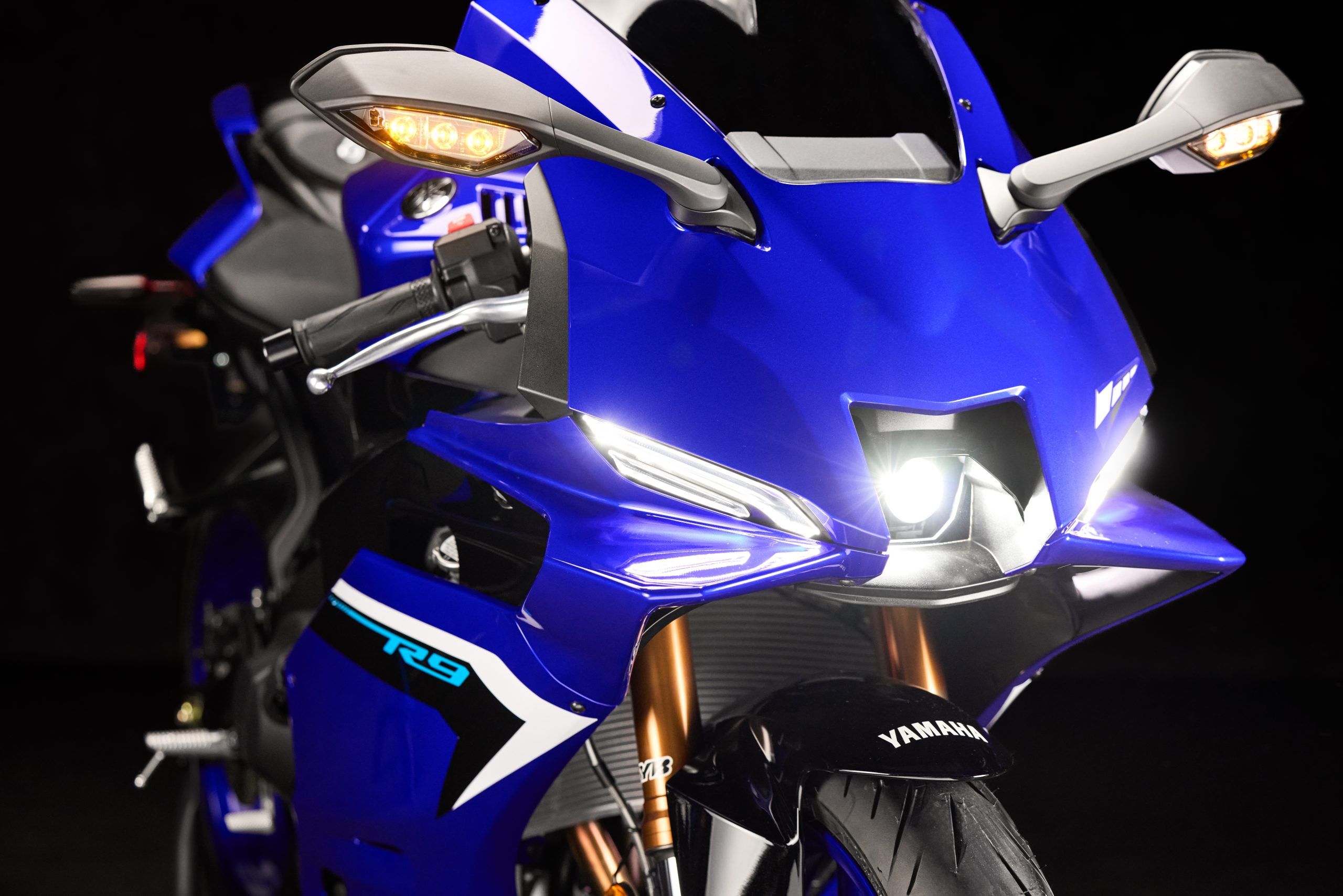
The interface is focused on a 5-inch diagonal color screen (TFT technology). We have four graphic presentations to choose from. Everything is controlled either via the buttons on the controls, or, for customizing modes (for example), via the Yamaha app on a smartphone. A connectivity module is in fact an integral part of the basic equipment.
By additionally using the Garmin Street Cross application (free), you can have GPS navigation on the motorcycle screen. And if you want to go a little further, a third app, called Y-Trac (paid), can record your data on the circuit, via the smartphone, or alternatively in tandem with an external GPS.
Premium braking
As it is a sports car as much as a road car, the suspensions and brakes are top-notch. For the first, at the front, we have two 320 mm diameter discs bitten by Brembo Stylema calipers (monoblock, radial attachment, 4 pistons), with a Brembo radial master cylinder too.

A 43mm inverted fork supplied by KYB provides damping at the front. You can adjust the compression (high or low speed) and relaxation. Each fork tube uses a valve that regulates the flow of oil, to obtain better damping quality.
At the rear, the aluminum swingarm goes hand in hand with a KYB central shock absorber, adjustable for preload, compression and rebound.

We also add that the fuel tank holds 14 liters, that the saddle is 830 mm from the ground and that the original tires are very sporty Bridgestone RS11!
We also note that the R9 2025 will be available in two colors: Icon Blue and Tech Black and should arrive in dealerships next March. This will be from May 2025, and roughly a month later for the variant that can be restricted to 35 kW of power for the limited A license (category A2). The Swiss price is not yet known or decided.
To find out more you can consult the Swiss website of Yamahaor contact our partners in particularSwiss directory motorcycle professionals, Motos Body in Geneva, Moto Bubbles in Morges (VD), MCM Moto in Lausanne, Facchinetti Motos in Crissier (VD), Chevalley Motorcycles in Saint-Légier (VD), hostettler moto Fribourg in Marly (FR) and hostettler moto Sion.
Source: comm. Yamaha

